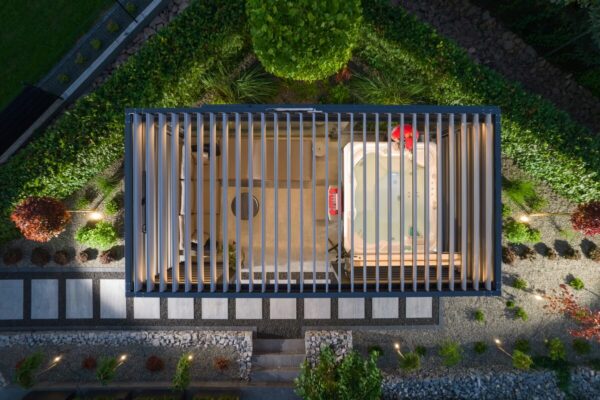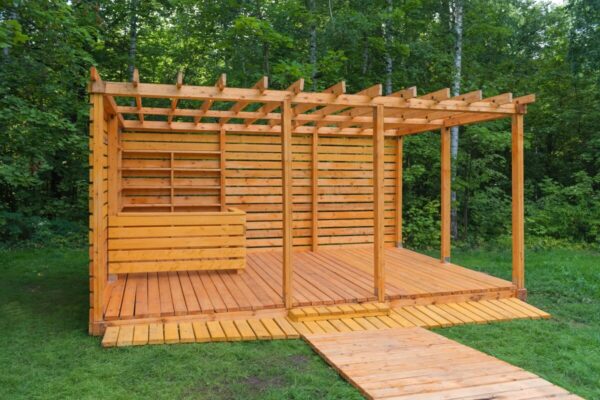Contents
- Innovations in the development of wooden boards
- Eco-friendly approaches and benefits in wooden board production
- Technological innovations driving the development of wooden boards
- The evolving role of wooden boards in modern architecture
- Practical applications of wooden boards in the furniture industry
- Most popular questions and answers
- What are the benefits of using wooden boards in construction?
- How do technological advancements improve wooden board production?
- Why is cross-laminated timber popular in modern construction?
- What environmental certifications should be considered for wooden boards?
- How do wooden boards contribute to sustainable architecture?
Innovations in the development of wooden boards
The development of wooden boards has undergone significant changes in recent years, driven by advancements in technology and a growing demand for sustainable building materials. The construction industry has witnessed an evolution in the types and applications of wooden boards, which are now being used in more sophisticated and varied ways than ever before. In particular, the introduction of new types of engineered wood products has paved the way for innovative architectural designs and increased efficiency in materials usage. From cross-laminated timber to laminated veneer lumber, the diversity of wooden boards available today caters to a range of structural and aesthetic requirements, reflecting a trend towards more environmentally friendly construction practices.
The focus on sustainability within the development of wooden boards is becoming increasingly prominent. Traditional solid wood practices have given rise to engineered wood products that offer not only superior structural capabilities but also utilize timber more efficiently, minimizing waste. For instance, cross-laminated timber (CLT) has become quite popular due to its enhanced strength-to-weight ratio and sustainability quotient. Its layered construction, where strips of wood are bonded together under high pressure, allows for the creation of large, strong panels while using smaller timber pieces, which might otherwise be discarded. Furthermore, advancements in adhesive technologies have minimized the amount of volatile organic compounds involved in production, making them more environmentally benign compared to traditional materials.
Eco-friendly approaches and benefits in wooden board production
One of the notable trends in the development of wooden boards is the emphasis on eco-friendly manufacturing processes. As environmental concerns become more pronounced globally, manufacturers are increasingly seeking methods to reduce the carbon footprints of their products. These methods include the use of sustainably sourced timber, the reduction of energy consumption during production, and the incorporation of non-toxic adhesives and finishes. This shift not only helps in reducing deforestation but also initiates a positive cycle of cultivating sustainable forests that absorb significant amounts of carbon dioxide, contributing to climate mitigation efforts.
Eco-friendly wood production practices are further supported by various certifications such as the Forest Stewardship Council (FSC) and the Programme for the Endorsement of Forest Certification (PEFC). These certifications ensure that the wood used in production is sourced sustainably and that the entire lifecycle of the product, from raw material extraction to manufacturing and disposal, adheres to strict environmental standards. Such accreditation boosts consumer confidence and encourages the adoption of wooden boards over more environmentally detrimental building materials like concrete and steel.
The benefits of these eco-friendly approaches extend beyond environmental impact. The use of sustainable wooden boards often results in lower energy costs for temperature regulation due to the natural insulating properties of wood. In addition, wood’s ability to absorb and release moisture moderates indoor humidity levels, enhancing indoor air quality and comfort for building occupants.
Technological innovations driving the development of wooden boards
Technological advancements play a crucial role in the development of wooden boards, influencing both production techniques and application capabilities. In recent years, digitalization and automation have transformed traditional methods, leading to increased precision and efficiency while reducing labor costs. Computer Numerical Control (CNC) machinery is now commonplace in cutting and shaping wood, allowing for greater customization and the creation of complex designs that were previously unachievable.
Additive manufacturing, or 3D printing, with wood-based materials has also emerged as an innovative production technique. By using a composite mixture of wood fibers and biodegradable binders, 3D printing enables the production of bespoke components and structures that maintain the aesthetic and functional qualities of traditional wood products but with minimal waste.
Furthermore, advancements in fire retardant treatments and finishes have expanded the use of wooden boards in construction settings that require stringent safety standards. Modern fire-resistant treatments penetrate deeper into the wood fibers, offering greater protection without compromising the material’s natural appearance and structural integrity.
The evolving role of wooden boards in modern architecture
The versatile nature of wooden boards in architecture is an exciting aspect of their development. Architects are exploring the aesthetic possibilities of wood, using its natural beauty to enhance interior and exterior designs. Whether it’s the warmth and texture of wood grain in residential projects or the striking aesthetic of exposed laminated beams in commercial developments, wood is being celebrated as both a structural and decorative element.
Wooden boards are increasingly being integrated into buildings’ structural systems, thanks to their impressive load-bearing capabilities and versatility. Innovations in joinery and fastening techniques mean that wooden boards can now be used in larger spans and more complex constructions, such as tall timber buildings, which are gaining traction worldwide. For instance, cross-laminated timber is instrumental in creating multi-story buildings that marry functionality with sustainability.
Moreover, the acoustic properties of wooden boards are being harnessed to improve sound insulation in interior spaces. This is particularly beneficial in environments like offices, schools, and auditoriums where noise control enhances overall functionality and comfort. With wood being a naturally renewable resource, its aesthetic and practical applications continue to diversify, offering architects an ideal blend of beauty, performance, and sustainability.
Practical applications of wooden boards in the furniture industry
In addition to their architectural uses, wooden boards are making a significant impact in the furniture industry. They offer a number of advantages over traditional materials, including sustainability, aesthetic versatility, and performance. Understanding these benefits can transform how manufacturers approach furniture design and production. You can learn more about this impact from articles such as How is the development of wooden boards changing the furniture industry?.
- Sustainability and eco-conscious design: By using recycled wood fibers and sustainable adhesives, manufacturers create furniture pieces that minimize environmental impact while appealing to eco-conscious consumers.
- Aesthetic diversity: Wooden boards come in a variety of finishes and textures, offering designers a wide palette to create visually striking and unique pieces that enhance interior decor.
- Durability and longevity: Engineered wooden boards often outperform solid wood in terms of strength and resistance to warping, making them ideal for furniture that must withstand daily use.
- Lightweight and easy maneuverability: Compared to materials like metal, wooden boards offer lightness that facilitates easy movement and reorganization, particularly beneficial in modular furniture designs.
- Customization potential: Advances in technology have enabled the creation of customizable wooden components, allowing manufacturers to cater to specific client desires and trends in interior design.
Incorporating these cutting-edge developments into furniture design not only opens up new possibilities in terms of style and functionality but also supports the rethinking of traditional construction paradigms. The future of the furniture industry seems to lean heavily towards integrating sustainable, adaptable, and aesthetically pleasing materials that meet the demands of modern consumers.
Most popular questions and answers
What are the benefits of using wooden boards in construction?
Wooden boards offer excellent insulation properties, helping to regulate indoor climates efficiently. Their strong yet lightweight nature makes them ideal for various construction applications. Additionally, their aesthetic appeal and sustainability make them a popular choice among eco-conscious designers.
How do technological advancements improve wooden board production?
Technological advancements allow for greater precision and customization in wooden board production. With tools like CNC machinery, complex and unique designs can be efficiently created. These improvements also reduce waste and enhance the overall quality of the boards.
Why is cross-laminated timber popular in modern construction?
Cross-laminated timber is renowned for its high strength-to-weight ratio and versatility in design, making it suitable for tall buildings. It enhances construction speed and reduces carbon footprints compared to traditional materials. Its sustainability benefits are also a significant draw for green building projects.
What environmental certifications should be considered for wooden boards?
Certifications like FSC and PEFC ensure wood is sourced sustainably, supporting eco-friendly practices. These certifications reassure consumers of the product’s minimal environmental impact. Choosing certified products helps maintain responsible forest management worldwide.
How do wooden boards contribute to sustainable architecture?
Wooden boards sequester carbon, promoting a low environmental impact. Their natural insulation properties reduce energy needs in buildings. Additionally, their aesthetic versatility complements sustainable design principles, offering architects diverse creative possibilities.




